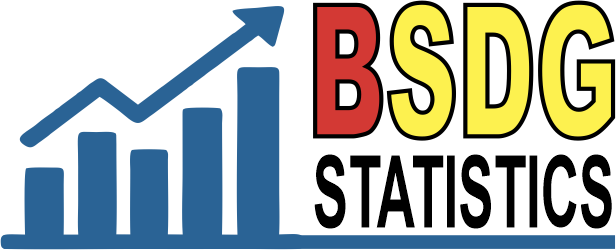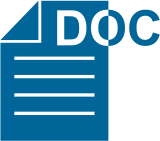POTENSI DAN GENESIS MANGAN DI KAWASAN KARS GOMBONG SELATAN BERDASARKAN PENELITIAN GEOLOGI LAPANGAN, ANALISIS DATA INDUKSI POLARISASI DAN KIMIA MINERAL
Abstract
Mangan ditemukan tersebar dalam kawasan kars Gombong Selatan; baik dalam bentuk nodul, lensa dan lapisan. Nodul dan lensa mangan ditemukan dalam breksi vulkanik dan lava Formasi Gabon yang melandasi topografi kars. Mangan berlapis berada di bawah batugamping pada bidang ketidakselarasan antara Formasi Gabon dengan Formasi Kalipucang yang miring ke arah utara.
Mangan berbentuk lensa serta iregular dikenali dari analisis data induksi polarisasi yang menunjukkan nilai tahanan jenis rendah (0 - 40 ohm meter) dan chargealibility tinggi (135 - 250 msec), diameter sekitar 2,5 m, tersebar pada kedalaman 5 40 m, bersifat masif, berasosiasi dengan alterasi hidrotermal. Nodul bercampur dengan silika, tersebar setempat, berasosiasi dengan lensa mangan, lava, tufa hijau dan breksi andesit, kandungan MnO2 < 50 %. Nodul termasuk mangan sedimen namun terkait proses hidrotermal bawah laut. Lapisan mangan berada di atas bidang ketidakselarasan, ketebalan 15 - 20 cm, tersebar pada areal seluas 555,98 Ha, termasuk mangan sedimen, dihasilkan dari proses pelapukan dan erosi, berwarna hitam-kecoklatan, lunak, kandungan MnO2 mencapai 74,19%. Potensi mangan sedimen diduga lebih banyak, kualitas lebih baik namun penambangannya akan banyak mengalami hambatan karena berada pada kawasan kars zone I dan II dengan ketebalan batugamping > 100 m.
Downloads
References
Asikin, S., Handoyo, A., Busana, H. , Gafoer, S., 1992, Peta Geologi Lembar Banyumas- Jawa Tengah, Pusat Penelitian dan Pengembangan Geologi, Bandung.
Banakar, V.K.,Tarkian, M., 1991, Genesis and growth of internal structure of manganese nodule, Indian Journal of Marine Science, Vol 20, p 20-24.
Evans, A.M., 1992, Ore Geology and Industrial Mineral - an Introduction, 3 rd edition, Blackwell Scientific Publication, London.
Herman Z., 2007, Evaluasi Sumberdaya dan Cadangan Bahan Galian Untuk Pertambangan Skala Kecil di Kabupaten Dompu, Nusa Tenggara Barat, Proceeding Pemaparan Hasil Kegiatan Lapangan dan Non Lapangan, Pusat Sumberdaya Geologi, Bandung.
Heshmatbehzadi K., Shababpour J., 2010, Metalogeny of Manganese & Ferromanganese Ore in Baft Ophiolitic Melange, Kerman- Iran,Australian Journal of Basic and Applied Sciences, 4(2): 302-313.
Kokichi, I., 1979, Mineralogy of Manganese Nodules From The GH 79-1 Area, Marine Geology & Oceanography of Pasific Manganese Nodules Province, Plenum Publishing, p 257-264.
Polgari,M., Drubina,M.S., Zabo,Z., 2004, Theoritical Model for Jurasic Manganese Mineralisation in Central Europe-Hungaria, Bulletin Geoscience, Vol 79, No 1, Czech Geological Survey.
Somayajulu, B.L.K., 2000, Growth Rates of Oceanic Manganese Nodules Implication to Their Genesis, Paleo Earth Enviromental Resources Potential, Current Science, Vol 78, No 3, p 300-308.
Suhala, S., Arifin, M., 1997, Bahan Galian Industri, Pusat Penelitian dan Pengembangan Teknologi Mineral, Bandung.
Sukandarrumidi, 1998, Bahan Galian Industri, Gadjah Mada University Press, Yogyakarta.
Telford, W.N., 1976; Applied Geophysics, Cambridge University Press, London
US Geological Survey Minerals Year Book, 2002 , Manganese, edited by Lisa A Corathers, USA, p 49.1 49.16
s, E.H., 1918, Manganese in New Mexico, Bulletin no 2, The New Mexico State School of Mines, Mineral Resources Survey, Saccoro, New Mexico, 85 pages.
Copyright (c) 2019 Buletin Sumber Daya Geologi

This work is licensed under a Creative Commons Attribution-NonCommercial-ShareAlike 4.0 International License.
Authors whose manuscripts are published agree to the following terms:
The publication rights of all journal manuscript materials published on the Buletin Sumber Daya Geologi website are held by the editorial board with the knowledge of the author (moral rights remain with the manuscript’s author).
The formal legal provisions for access to digital articles in this electronic journal are subject to the terms of the Creative Commons Attribution-ShareAlike (CC BY-SA) license. This means that Buletin Sumber Daya Geologi has the right to store, convert media/formats, manage in the form of a database, maintain, and publish the article without requesting permission from the author, as long as the author’s name is cited as the copyright holder.
Manuscripts published in both print and electronic formats are open access for educational, research, investigative, and library purposes. Beyond these purposes, the editorial board is not responsible for any violations of copyright law.















